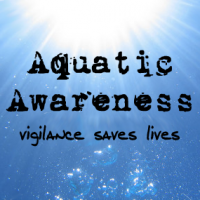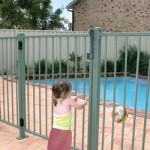 When talking about drowning and trying to make a distinction between those that die and those that survive following a submersion there have always been some problems associated with the language used.
When talking about drowning and trying to make a distinction between those that die and those that survive following a submersion there have always been some problems associated with the language used.
There have been multiple terms associated with drowning, and different ways of describing the outcomes associated with a submersion.
In this post we will have a look at the language used, why it is used and discuss how the Samuel Morris Foundation uses the language.
Drowning
Even defining drowning has not been a clear process and until relatively recently there have been varying ways of describing it including wet drowning, dry drowning, active or passive drowning, secondary drowning or silent drowning. In fact there where over 20 different definitions associated with drowning.
At the 2002 the World Congress on Drowning a range of experts suggested a new consensus definition for drowning and they required that the new definition should include cases of both fatal and non-fatal drowning.
So now drowning is defined as a process resulting in primary respiratory impairment from submersion in a liquid medium. (and none of the terms like dry drowning, wet drowning, secondary drowning etc are used)
Simple isn’t it….
Well not quite….
So now there is the problem.. this is a nice simple medical explanation of drowning, and the reason that such a nice definition is useful is that it enables other processes, such as coding entries within hospital admission processes and it also allows researchers to draw more meaningful conclusions from pooled data and make it easier to improve injury surveillance and prevention activities.
Defining drowning outcomes
In reaching the consensus definition they also reached a consensus on some definitions around outcomes. The outcomes of a drowning as defined above (and as described in the World Health Organisations [WHO] Policy and Practice guidelines) can be rapid or delayed death, morbidity , or life without morbidity.
We will have a look at these below as these terms also provide some further challenges around the language that is used when we take these terms into the general public as part of education or awareness raising activities.
Drowning leading to rapid or delayed death
A rapid death after an immersion is a fairly straight forward concept to understand, but what about delayed death after a drowning?
It is our understanding that if a person dies within 24 hours then the cause of death is recorded as a “drowning”, but if a person survives beyond 24 hours then the cause of death will not be recorded as a “drowning” . It will be recorded as resulting from something like cardiac arrest or respiratory failure etc and there may or may not be a secondary code added that reflects that this primary cause of death was subsequent to a drowning.
But what about when they don’t die within 24 hrs
As described above the medical fraternity now includes non-fatal drowning cases in the definition of drowning, but defines them by outcome, either with morbidity of without morbidity.
Understanding morbidity.
Medical dictionaries define morbidity as:
- an illness or abnormal condition or quality
- (in statistics) the rate at which an illness or abnormality occurs, calculated by dividing the number of people who are affected within a group by the entire number of people in that group
- the rate at which an illness occurs in a particular area or population.
So for the purposes of this discussion, clearly it is the first of these definitions that is in operation.
Drowning with morbidity
Many have investigated and reported on outcome and possible predictors. ,1,2,3 However, no single system is comprehensive and there are pitfalls in the methodologies used.4 There are a number of researchers continuing to look at these issues.
Generally, the intuitive view stands: the shorter the submersion time and the shorter the delay to CPR, the better the outcome.
- Prognosis is ultimately related directly to the duration and magnitude of hypoxia.
- The most significant impact on morbidity and mortality occurs before arrival at hospital.
- Poor survival is associated with the need for continued cardiopulmonary resuscitation efforts in hospital (35-60% die in the emergency department and 60-100% have long-term neurological sequelae).
- Even with hypothermia, intact survival of comatose patients is still quite uncommon.
- In warm water immersion, those who were not doing well at 24 hours have a poor neurological outcome.5
As we consistently remind people, and the reason that this foundation exists, is that according to the Australian Institute of Health and Welfare approximately one quarter of all people admitted to hospital following a drowning will experience what the medical fraternity calls moderate to severe sequalae, which in the case of drownings, are hypoxic brain injuries.
Drowning without morbidity
This is an interesting way to say that the casualty fully recovers. We recently posted about a number of successful outcomes and some associated issues, so we will not explore this issue here.
Non-Fatal or Near Drowning why we continue to use these terms?
The Samuel Morris Foundation is fully supportive of the need for standardised definitions, but recognise that use of standardised definitions can present some problems when discussing issues outside of the medical or academic communities.
Some will say there is no such thing as a near-drowning, you either drowned or you didn’t, and according to the consensus definition this is technically true, however the term “near drowning” was for a long time part of the accepted definitions dealing with non-fatal drowning cases and is readily found in both the medical and academic literature.
A search of the internet will also show that even among the medical fraternity and medical sites dealing with drowning there is still frequent reference to near drowning and non-fatal drowning. Almost all of the definitions and discussions using these terms clearly spell out that they are associated with surviving for more than 24 hours after a submersion.
Both of the terms Non-Fatal and Near-Drowning are used on this site, as they are on MANY sites around the world, they are used interchangeably and they are used for a few very simple reasons…. the general public due to common usage and understanding over many years continues to associate the term “drowned” with an outcome of death and near-drowning or non-fatal drowning with an outcome of survival.
Using language like a “the child had a drowning with morbidity” is foreign language to most of the public. In public advocacy work it is important to use language which people readily understand without having to stop and explain it (like this post does). If simple common language is not used there is a good chance that a large proportion of the any audience will stop paying attention when they encounter terms they are not familiar with or sound like jargon.
So in discussing drowning with the medical and academic fraternities we will use the precise definitions, in dealing with the public we will use language that conveys immediate understanding and attempt over time to bring the conversation and public understanding closer and closer to the medical/academic definitions.
References:
-
Zuckerman GB, Gregory PM, Santos-Damiani SM; Predictors of death and neurologic impairment in pediatric submersion injuries. The Pediatric Risk of Mortality Score. Arch Pediatr Adolesc Med. 1998 Feb;152(2):134-40. [abstract]
-
Habib DM, Tecklenburg FW, Webb SA, et al; Prediction of childhood drowning and near-drowning morbidity and mortality. Pediatr Emerg Care. 1996 Aug;12(4):255-8. [abstract]
-
Oakes DD, Sherck JP, Maloney JR, et al; Prognosis and management of victims of near-drowning. J Trauma. 1982 Jul;22(7):544-9. [abstract]
-
Dueker CW; Immersion in fresh water and survival. Chest. 2004 Dec;126(6):2027-8; author reply 2028-9.
-
Bratton SL, Jardine DS, Morray JP; Serial neurologic examinations after near drowning and outcome.; Arch Pediatr Adolesc Med.1994 Feb;148(2):167-70. [abstract]




Hi there! thank you so much for all the VERY usefull info! I enjoy learning as we go!
We are living in South Africa and had a Near drown about a year and a half ago. We have, how ever, had a totally recoverd baby at the end. The drowning Specialist at the hospital we were flown to called ours a SUCCESSFULL Near-drowning….not that this term is generally used, but it was EXACTLY describing what happen!
My son was submersed for maybe 3-5 min in cold (9’C) swimming pool water. No reaction and no pulse when taken out. layman’s CPR was done immediatly. Total time before fully resused was about an hour and a half. He was kept in a medically induced coma for 9 days, and treated with the hypothermal (cold) bubble wrap suit –
We had him tested a year after the accident and the findings confirmed what we expected: 100% NO fall out after the ordeal! (Praise God!)
Is this an unusual term to you too?
Thanks Annelize,
We are glad to hear your baby has had such a successful outcome.
The whole purpose of writing this piece was because of the variety of language. Technically your son has had a “drowning without morbidity”, but no matter which way you describe it your baby is one of the lucky ones, and we are happy for you.
There will be some follow up information on here in the near future about the impacts of cold water vs warm water in drownings.